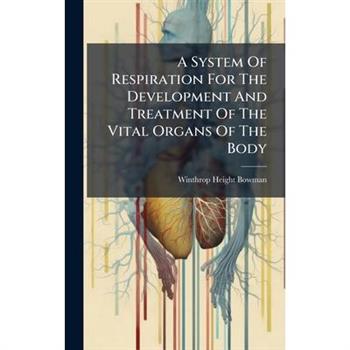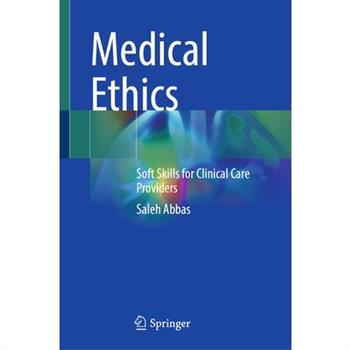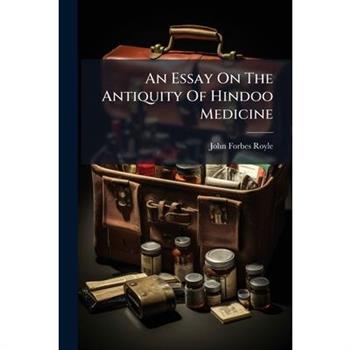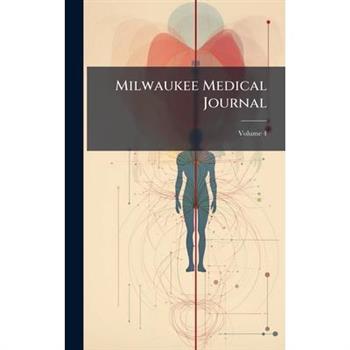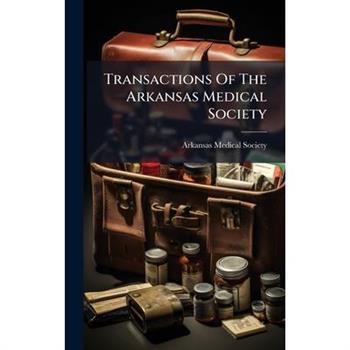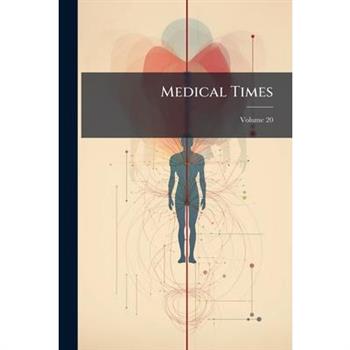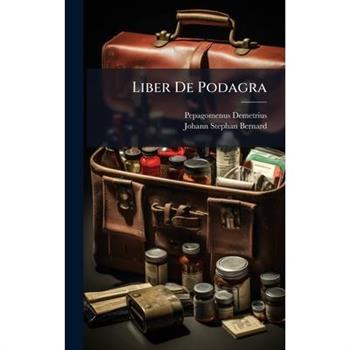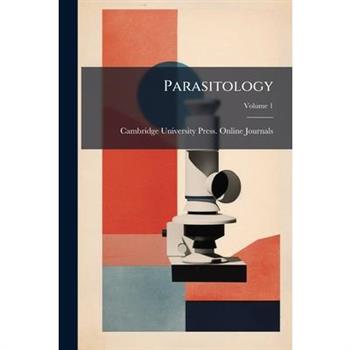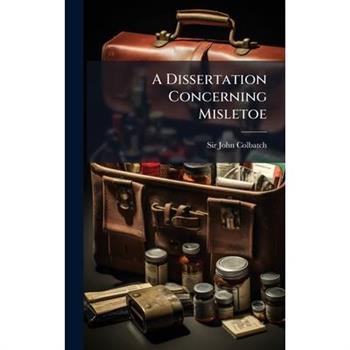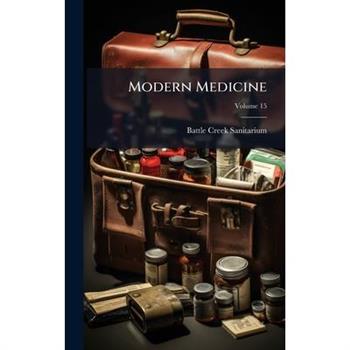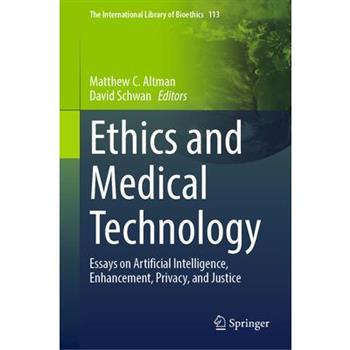A Summary Of Reports From Practicing Physicians Concerning The Uses Of The Vegetable Remedies Known As Specific Medicines
"A Summary Of Reports From Practicing Physicians Concerning The Uses Of The Vegetable Remedies Known As Specific Medicines" offers a detailed look into 19th-century medical practices, specifically focusing on the use of plant-based remedies. Compiled by Lloyd Brothers of Cincinnati, Ohio, this volume gathers reports from physicians experienced in using 'specific medicines'-a term referring to plant extracts and their targeted applications.The book includes an introductory article on the use of these remedies in gynecology, providing insights into women's health treatments of the era. This work is valuable for historians of medicine, researchers in alternative medicine, and anyone interested in the evolution of medical treatments and the historical use of botanical remedies.This work has been selected by scholars as being culturally important, and is part of the knowledge base of civilization as we know it. This work was reproduced from the original artifact, and remains as true to the original work as possible. Therefore, you will see the original copyright references, library stamps (as most of these works have been housed in our most important libraries around the world), and other notations in the work.This work is in the public domain in the United States of America, and possibly other nations. Within the United States, you may freely copy and distribute this work, as no entity (individual or corporate) has a copyright on the body of the work.As a reproduction of a historical artifact, this work may contain missing or blurred pages, poor pictures, errant marks, etc. Scholars believe, and we concur, that this work is important enough to be preserved, reproduced, and made generally available to the public. We appreciate your support of the preservation process, and thank you for being an important part of keeping this knowledge alive and relevant.
Collections For An Essay Towards A Materia Medica Of The United-states, Volume 1, Parts 1-2
"Collections For An Essay Towards A Materia Medica Of The United-states, Volume 1, Parts 1-2" by Benjamin Smith Barton offers a detailed exploration of medicinal substances found in the early United States. This historical work delves into the natural resources utilized for medical treatments during the period. Barton meticulously documents and categorizes various plants and minerals, providing insights into their therapeutic properties and traditional uses. The book serves as a valuable resource for understanding the historical context of medicine in the United States, reflecting early scientific inquiry and the integration of indigenous knowledge. It remains relevant for historians of science and medicine, botanists, and anyone interested in the historical uses of natural remedies.This work has been selected by scholars as being culturally important, and is part of the knowledge base of civilization as we know it. This work was reproduced from the original artifact, and remains as true to the original work as possible. Therefore, you will see the original copyright references, library stamps (as most of these works have been housed in our most important libraries around the world), and other notations in the work.This work is in the public domain in the United States of America, and possibly other nations. Within the United States, you may freely copy and distribute this work, as no entity (individual or corporate) has a copyright on the body of the work.As a reproduction of a historical artifact, this work may contain missing or blurred pages, poor pictures, errant marks, etc. Scholars believe, and we concur, that this work is important enough to be preserved, reproduced, and made generally available to the public. We appreciate your support of the preservation process, and thank you for being an important part of keeping this knowledge alive and relevant.
An Expostulatory Address To John Ranby ... Occasioned By His Treatise On Gunshot-wounds, And His Narrative Of The Earl Of Orford's Last Illness
This is an expository address to John Ranby, prompted by his treatise on gunshot wounds and his narrative of the Earl of Orford's last illness. It provides a unique insight into medical debates and practices during the 18th century. The text offers valuable perspectives on surgical techniques, patient care, and the professional dynamics of the medical community in that era. This anonymous work sheds light on the controversies surrounding medical treatments and diagnoses of the time, particularly those concerning prominent figures like the Earl of Orford. The address serves as a historical document reflecting the state of medical knowledge and the challenges faced by practitioners in the 1700s.This work has been selected by scholars as being culturally important, and is part of the knowledge base of civilization as we know it. This work was reproduced from the original artifact, and remains as true to the original work as possible. Therefore, you will see the original copyright references, library stamps (as most of these works have been housed in our most important libraries around the world), and other notations in the work.This work is in the public domain in the United States of America, and possibly other nations. Within the United States, you may freely copy and distribute this work, as no entity (individual or corporate) has a copyright on the body of the work.As a reproduction of a historical artifact, this work may contain missing or blurred pages, poor pictures, errant marks, etc. Scholars believe, and we concur, that this work is important enough to be preserved, reproduced, and made generally available to the public. We appreciate your support of the preservation process, and thank you for being an important part of keeping this knowledge alive and relevant.
Book On The Physician Himself
"Book On The Physician Himself" offers timeless advice and reflections for medical practitioners. Authored by D. W. Cathell, this work delves into the personal and professional conduct of physicians, exploring the qualities that contribute to a successful and fulfilling career in medicine. From bedside manner to ethical considerations, the book provides insights into the multifaceted role of a doctor. This book is a valuable resource for both seasoned professionals and those just embarking on their medical journey, offering guidance on navigating the challenges and rewards of the healing profession. Cathell's observations provide a unique perspective on the art and science of medicine.This work has been selected by scholars as being culturally important, and is part of the knowledge base of civilization as we know it. This work was reproduced from the original artifact, and remains as true to the original work as possible. Therefore, you will see the original copyright references, library stamps (as most of these works have been housed in our most important libraries around the world), and other notations in the work.This work is in the public domain in the United States of America, and possibly other nations. Within the United States, you may freely copy and distribute this work, as no entity (individual or corporate) has a copyright on the body of the work.As a reproduction of a historical artifact, this work may contain missing or blurred pages, poor pictures, errant marks, etc. Scholars believe, and we concur, that this work is important enough to be preserved, reproduced, and made generally available to the public. We appreciate your support of the preservation process, and thank you for being an important part of keeping this knowledge alive and relevant.
First Lines Of The Practice Of Physic, Volumes 1-2
This comprehensive two-volume work, "First Lines Of The Practice Of Physic," offers a detailed exploration of medical practices in the 18th century. Authored by William Cullen and John Rotheram, it provides insights into the understanding and treatment of diseases during this period. Volume 1 lays the groundwork with fundamental principles, while Volume 2 delves into specific ailments and their management. A valuable resource for historians of medicine and anyone interested in the evolution of medical knowledge, this book presents a snapshot of the medical landscape of its time.This work has been selected by scholars as being culturally important, and is part of the knowledge base of civilization as we know it. This work was reproduced from the original artifact, and remains as true to the original work as possible. Therefore, you will see the original copyright references, library stamps (as most of these works have been housed in our most important libraries around the world), and other notations in the work.This work is in the public domain in the United States of America, and possibly other nations. Within the United States, you may freely copy and distribute this work, as no entity (individual or corporate) has a copyright on the body of the work.As a reproduction of a historical artifact, this work may contain missing or blurred pages, poor pictures, errant marks, etc. Scholars believe, and we concur, that this work is important enough to be preserved, reproduced, and made generally available to the public. We appreciate your support of the preservation process, and thank you for being an important part of keeping this knowledge alive and relevant.
The Clinique
"The Clinique, Volume 38" presents a historical snapshot of homeopathic medical practices and education at the turn of the 20th century. Compiled from the Homeopathic Medical Society of the State of Wisconsin, the Illinois Homeopathic Medical Association, and the Hahnemann Medical College and Hospital of Chicago, this volume offers insights into the principles and applications of homeopathy during a period of significant medical development. Readers interested in the history of medicine, particularly the evolution of homeopathic treatments and their integration into medical education, will find this collection invaluable. It reflects the debates, research, and clinical experiences shaping the field of homeopathy. This volume provides a window into the past, revealing the challenges and innovations that defined early homeopathic medicine in America.This work has been selected by scholars as being culturally important, and is part of the knowledge base of civilization as we know it. This work was reproduced from the original artifact, and remains as true to the original work as possible. Therefore, you will see the original copyright references, library stamps (as most of these works have been housed in our most important libraries around the world), and other notations in the work.This work is in the public domain in the United States of America, and possibly other nations. Within the United States, you may freely copy and distribute this work, as no entity (individual or corporate) has a copyright on the body of the work.As a reproduction of a historical artifact, this work may contain missing or blurred pages, poor pictures, errant marks, etc. Scholars believe, and we concur, that this work is important enough to be preserved, reproduced, and made generally available to the public. We appreciate your support of the preservation process, and thank you for being an important part of keeping this knowledge alive and relevant.
Northwest Medicine, Volumes 6-7
"Northwest Medicine, Volumes 6-7" presents a comprehensive collection of medical articles and reports from the early 20th century. This historical journal offers a fascinating glimpse into the medical practices, public health concerns, and scientific advancements of the time. Covering a wide range of topics relevant to the Pacific Northwest region, the volumes document the challenges and triumphs of healthcare professionals in a rapidly evolving field. Researchers, historians, and medical professionals will find valuable insights into the evolution of medicine, the development of public health initiatives, and the specific health issues affecting the Northwest. This collection serves as an important resource for understanding the historical context of modern medical practices and the enduring commitment to improving healthcare outcomes.This work has been selected by scholars as being culturally important, and is part of the knowledge base of civilization as we know it. This work was reproduced from the original artifact, and remains as true to the original work as possible. Therefore, you will see the original copyright references, library stamps (as most of these works have been housed in our most important libraries around the world), and other notations in the work.This work is in the public domain in the United States of America, and possibly other nations. Within the United States, you may freely copy and distribute this work, as no entity (individual or corporate) has a copyright on the body of the work.As a reproduction of a historical artifact, this work may contain missing or blurred pages, poor pictures, errant marks, etc. Scholars believe, and we concur, that this work is important enough to be preserved, reproduced, and made generally available to the public. We appreciate your support of the preservation process, and thank you for being an important part of keeping this knowledge alive and relevant.
Report Of A Committee Of The Boston Society For Medical Improvement
This is a report from a committee of the Boston Society for Medical Improvement regarding the inhalation of sulfuric ether. It provides a fascinating glimpse into the early days of anesthesia and the medical debates surrounding its use. The document offers insights into 19th-century medical practices and the concerns raised about the safety and efficacy of new treatments. As a primary source, this report is invaluable for researchers and historians interested in the development of anesthesiology and the evolution of medical thought. It also showcases the rigorous examination and discussion that characterized medical societies during this transformative period in medicine.This work has been selected by scholars as being culturally important, and is part of the knowledge base of civilization as we know it. This work was reproduced from the original artifact, and remains as true to the original work as possible. Therefore, you will see the original copyright references, library stamps (as most of these works have been housed in our most important libraries around the world), and other notations in the work.This work is in the public domain in the United States of America, and possibly other nations. Within the United States, you may freely copy and distribute this work, as no entity (individual or corporate) has a copyright on the body of the work.As a reproduction of a historical artifact, this work may contain missing or blurred pages, poor pictures, errant marks, etc. Scholars believe, and we concur, that this work is important enough to be preserved, reproduced, and made generally available to the public. We appreciate your support of the preservation process, and thank you for being an important part of keeping this knowledge alive and relevant.
Diss. Inaug. ... De Praecipuis Medicatis Germaniae Fontibus Eorumque Examine Chymico Mechanico
Diss. Inaug. ... De Praecipuis Medicatis Germaniae Fontibus Eorumque Examine Chymico Mechanico explores the prominent medicinal springs of Germany through chemical and mechanical examination. Authored by Friedrich Hoffmann and Georg G. Hoffmann, this historical work delves into the scientific analysis of these springs, offering insights into their medicinal properties and composition. This work provides a valuable resource for those interested in the history of medicine, early chemical analysis, and the utilization of natural resources for health purposes.This work has been selected by scholars as being culturally important, and is part of the knowledge base of civilization as we know it. This work was reproduced from the original artifact, and remains as true to the original work as possible. Therefore, you will see the original copyright references, library stamps (as most of these works have been housed in our most important libraries around the world), and other notations in the work.This work is in the public domain in the United States of America, and possibly other nations. Within the United States, you may freely copy and distribute this work, as no entity (individual or corporate) has a copyright on the body of the work.As a reproduction of a historical artifact, this work may contain missing or blurred pages, poor pictures, errant marks, etc. Scholars believe, and we concur, that this work is important enough to be preserved, reproduced, and made generally available to the public. We appreciate your support of the preservation process, and thank you for being an important part of keeping this knowledge alive and relevant.
The Clinique
"The Clinique, Volume 38" presents a historical snapshot of homeopathic medical practices and education at the turn of the 20th century. Compiled from the Homeopathic Medical Society of the State of Wisconsin, the Illinois Homeopathic Medical Association, and the Hahnemann Medical College and Hospital of Chicago, this volume offers insights into the principles and applications of homeopathy during a period of significant medical development. Readers interested in the history of medicine, particularly the evolution of homeopathic treatments and their integration into medical education, will find this collection invaluable. It reflects the debates, research, and clinical experiences shaping the field of homeopathy. This volume provides a window into the past, revealing the challenges and innovations that defined early homeopathic medicine in America.This work has been selected by scholars as being culturally important, and is part of the knowledge base of civilization as we know it. This work was reproduced from the original artifact, and remains as true to the original work as possible. Therefore, you will see the original copyright references, library stamps (as most of these works have been housed in our most important libraries around the world), and other notations in the work.This work is in the public domain in the United States of America, and possibly other nations. Within the United States, you may freely copy and distribute this work, as no entity (individual or corporate) has a copyright on the body of the work.As a reproduction of a historical artifact, this work may contain missing or blurred pages, poor pictures, errant marks, etc. Scholars believe, and we concur, that this work is important enough to be preserved, reproduced, and made generally available to the public. We appreciate your support of the preservation process, and thank you for being an important part of keeping this knowledge alive and relevant.
The Art Of Medicine, Introductory Address
"The Art of Medicine, Introductory Address" by Edward Lund offers a fascinating glimpse into the ideals and practices of medicine in the late 19th century. Delivered as an introductory address, this work explores the multifaceted nature of the medical profession, emphasizing not only the scientific aspects but also the crucial role of compassion, ethics, and dedication to patient care.Lund's address provides historical context to the evolution of medical education and the responsibilities expected of physicians. It serves as a valuable resource for those interested in the history of medicine and the enduring principles that guide the art of healing.This work has been selected by scholars as being culturally important, and is part of the knowledge base of civilization as we know it. This work was reproduced from the original artifact, and remains as true to the original work as possible. Therefore, you will see the original copyright references, library stamps (as most of these works have been housed in our most important libraries around the world), and other notations in the work.This work is in the public domain in the United States of America, and possibly other nations. Within the United States, you may freely copy and distribute this work, as no entity (individual or corporate) has a copyright on the body of the work.As a reproduction of a historical artifact, this work may contain missing or blurred pages, poor pictures, errant marks, etc. Scholars believe, and we concur, that this work is important enough to be preserved, reproduced, and made generally available to the public. We appreciate your support of the preservation process, and thank you for being an important part of keeping this knowledge alive and relevant.
The Hot Springs Medical Journal, Volume 2, Issue 9
Explore the world of 19th-century medicine with "The Hot Springs Medical Journal, Volume 2, Issue 9." This fascinating journal offers a glimpse into the medical practices, theories, and challenges of the time, providing valuable insights for historians, medical professionals, and anyone interested in the evolution of healthcare. Dive into detailed case studies, insightful articles, and thought-provoking discussions that shed light on the medical landscape of a bygone era.This volume captures a specific moment in the history of medicine, reflecting the unique health concerns and available treatments of the period. Discover the remedies, debates, and innovations that shaped the medical field and paved the way for modern advancements. "The Hot Springs Medical Journal" is an essential resource for understanding the roots of contemporary medical science and the dedication of those who pioneered its progress.This work has been selected by scholars as being culturally important, and is part of the knowledge base of civilization as we know it. This work was reproduced from the original artifact, and remains as true to the original work as possible. Therefore, you will see the original copyright references, library stamps (as most of these works have been housed in our most important libraries around the world), and other notations in the work.This work is in the public domain in the United States of America, and possibly other nations. Within the United States, you may freely copy and distribute this work, as no entity (individual or corporate) has a copyright on the body of the work.As a reproduction of a historical artifact, this work may contain missing or blurred pages, poor pictures, errant marks, etc. Scholars believe, and we concur, that this work is important enough to be preserved, reproduced, and made generally available to the public. We appreciate your support of the preservation process, and thank you for being an important part of keeping this knowledge alive and relevant.
Report Of Preliminary Investigations On The Metabolism Of Nitrogen And Carbon In The Human Organism
"Report Of Preliminary Investigations On The Metabolism Of Nitrogen And Carbon In The Human Organism" details early research into human metabolism. Authored by Wilbur Olin Atwater, the report focuses on investigations conducted using a specially constructed respiration calorimeter. This historical document offers insights into the scientific methodologies and findings related to the metabolic processes of nitrogen and carbon within the human body. It is a valuable resource for researchers and historians interested in the development of physiological and biochemical understanding.This work has been selected by scholars as being culturally important, and is part of the knowledge base of civilization as we know it. This work was reproduced from the original artifact, and remains as true to the original work as possible. Therefore, you will see the original copyright references, library stamps (as most of these works have been housed in our most important libraries around the world), and other notations in the work.This work is in the public domain in the United States of America, and possibly other nations. Within the United States, you may freely copy and distribute this work, as no entity (individual or corporate) has a copyright on the body of the work.As a reproduction of a historical artifact, this work may contain missing or blurred pages, poor pictures, errant marks, etc. Scholars believe, and we concur, that this work is important enough to be preserved, reproduced, and made generally available to the public. We appreciate your support of the preservation process, and thank you for being an important part of keeping this knowledge alive and relevant.
Cancer Biology and Clinical Implications
Cancer Biology and Clinical Implications was born from the mix of Cancer Essentials and Scientific Tales About Cancer. Why? because I accomplished like this, the idea of going in Cancer Science from bench to bedside, from basic science to translational research.Cancer is the most fascinating and complex disease-process that we daily faced as Clinical Oncologists, Clinical Scientists or Basic Researchers.The phletora of Pharmacological Compounds is huge and comports most of them novel mechanisms of actions in order to tackle the tumoral cell in many different checkpoints.Still a fascinating road on the way to cure this disease or at least make it a chronic one.
Ramazzini's Abhandlung Von Den Krankheiten Der K?1/4nstler Und Handwerker
"Ramazzini's Abhandlung Von Den Krankheiten Der K?1/4nstler Und Handwerker, Volume 1" is a seminal work in the field of occupational medicine, originally authored by Bernardino Ramazzini and later translated and annotated by Johann Christian Gottlieb Ackermann. This volume offers a detailed examination of the diseases and health hazards faced by artists and craftsmen in various industries. Ramazzini's meticulous observations provide invaluable insights into the working conditions and health risks prevalent in the 18th century. The book meticulously documents a wide range of ailments linked to specific trades, offering a historical perspective on the impact of industrial activities on public health. It serves as a foundational text for understanding the principles of occupational hygiene and preventative medicine. This English edition ensures that Ramazzini's pioneering research remains accessible to modern scholars and practitioners interested in the history of medicine, public health, and the social impact of industrialization. This work has been selected by scholars as being culturally important, and is part of the knowledge base of civilization as we know it. This work was reproduced from the original artifact, and remains as true to the original work as possible. Therefore, you will see the original copyright references, library stamps (as most of these works have been housed in our most important libraries around the world), and other notations in the work.This work is in the public domain in the United States of America, and possibly other nations. Within the United States, you may freely copy and distribute this work, as no entity (individual or corporate) has a copyright on the body of the work.As a reproduction of a historical artifact, this work may contain missing or blurred pages, poor pictures, errant marks, etc. Scholars believe, and we concur, that this work is important enough to be preserved, reproduced, and made generally available to the public. We appreciate your support of the preservation process, and thank you for being an important part of keeping this knowledge alive and relevant.
The Safeguards of Life
In "The Safeguards of Life", A.F. Kalkhoff presents a comprehensive guide to maintaining optimal health and well-being. Published in 1892, this enduring work delves into the essential practices for safeguarding one's life through proper hygiene, diet, and lifestyle choices. Kalkhoff's insights offer a window into the health perspectives of the late 19th century, while also providing timeless advice relevant to contemporary readers. Explore the principles of healthful living as articulated by a dedicated advocate for personal well-being. This book serves as both a historical artifact and a source of practical guidance for anyone interested in understanding and improving their health.This work has been selected by scholars as being culturally important, and is part of the knowledge base of civilization as we know it. This work was reproduced from the original artifact, and remains as true to the original work as possible. Therefore, you will see the original copyright references, library stamps (as most of these works have been housed in our most important libraries around the world), and other notations in the work.This work is in the public domain in the United States of America, and possibly other nations. Within the United States, you may freely copy and distribute this work, as no entity (individual or corporate) has a copyright on the body of the work.As a reproduction of a historical artifact, this work may contain missing or blurred pages, poor pictures, errant marks, etc. Scholars believe, and we concur, that this work is important enough to be preserved, reproduced, and made generally available to the public. We appreciate your support of the preservation process, and thank you for being an important part of keeping this knowledge alive and relevant.
The Harveian Oration
"The Harveian Oration," delivered before the Royal College of Physicians in London on June 27th, 1846, offers a fascinating glimpse into the medical thought and practices of the mid-19th century. Authored by John Elliotson, a prominent physician of his time, this oration reflects the scholarly traditions of the Royal College and provides insights into the contemporary understanding of medicine, its history, and its future direction. The text preserves a valuable historical record of medical discourse and the intellectual atmosphere of the era, making it a compelling read for anyone interested in the history of medicine and the evolution of medical thought.This work has been selected by scholars as being culturally important, and is part of the knowledge base of civilization as we know it. This work was reproduced from the original artifact, and remains as true to the original work as possible. Therefore, you will see the original copyright references, library stamps (as most of these works have been housed in our most important libraries around the world), and other notations in the work.This work is in the public domain in the United States of America, and possibly other nations. Within the United States, you may freely copy and distribute this work, as no entity (individual or corporate) has a copyright on the body of the work.As a reproduction of a historical artifact, this work may contain missing or blurred pages, poor pictures, errant marks, etc. Scholars believe, and we concur, that this work is important enough to be preserved, reproduced, and made generally available to the public. We appreciate your support of the preservation process, and thank you for being an important part of keeping this knowledge alive and relevant.
Practical Observations on Vaccination, or, Inoculation for the Cow-pock
"Practical Observations on Vaccination, or, Inoculation for the Cow-pock" by John Redman Coxe offers a historical perspective on the early practice of vaccination. Published in 1802, this work provides insights into the methods and understanding of vaccination during a pivotal period in medical history. Coxe's observations shed light on the techniques used to inoculate individuals with cowpox as a means of preventing smallpox. This treatise serves as a valuable resource for understanding the historical context of vaccination and its early impact on public health. It is a significant document for those interested in the history of medicine, the development of immunology, and the fight against infectious diseases.This work has been selected by scholars as being culturally important, and is part of the knowledge base of civilization as we know it. This work was reproduced from the original artifact, and remains as true to the original work as possible. Therefore, you will see the original copyright references, library stamps (as most of these works have been housed in our most important libraries around the world), and other notations in the work.This work is in the public domain in the United States of America, and possibly other nations. Within the United States, you may freely copy and distribute this work, as no entity (individual or corporate) has a copyright on the body of the work.As a reproduction of a historical artifact, this work may contain missing or blurred pages, poor pictures, errant marks, etc. Scholars believe, and we concur, that this work is important enough to be preserved, reproduced, and made generally available to the public. We appreciate your support of the preservation process, and thank you for being an important part of keeping this knowledge alive and relevant.
Disp. Med. Inaug. De Animi Commotionum Vi Medica
"Disp. Med. Inaug. De Animi Commotionum Vi Medica" explores the medical significance of emotional disturbances. Authored by Johann Wilhelm Pauli and Christian Mentz, this historical medical inaugural dissertation delves into the understanding of how emotions impact health. The work offers insights into the historical perspectives on the interplay between psychological states and physical well-being, providing a valuable resource for those interested in the history of medicine and the study of emotions within a medical context.This work has been selected by scholars as being culturally important, and is part of the knowledge base of civilization as we know it. This work was reproduced from the original artifact, and remains as true to the original work as possible. Therefore, you will see the original copyright references, library stamps (as most of these works have been housed in our most important libraries around the world), and other notations in the work.This work is in the public domain in the United States of America, and possibly other nations. Within the United States, you may freely copy and distribute this work, as no entity (individual or corporate) has a copyright on the body of the work.As a reproduction of a historical artifact, this work may contain missing or blurred pages, poor pictures, errant marks, etc. Scholars believe, and we concur, that this work is important enough to be preserved, reproduced, and made generally available to the public. We appreciate your support of the preservation process, and thank you for being an important part of keeping this knowledge alive and relevant.
The Hot Springs Medical Journal, Volume 2, Issue 9
Explore the world of 19th-century medicine with "The Hot Springs Medical Journal, Volume 2, Issue 9." This fascinating journal offers a glimpse into the medical practices, theories, and challenges of the time, providing valuable insights for historians, medical professionals, and anyone interested in the evolution of healthcare. Dive into detailed case studies, insightful articles, and thought-provoking discussions that shed light on the medical landscape of a bygone era.This volume captures a specific moment in the history of medicine, reflecting the unique health concerns and available treatments of the period. Discover the remedies, debates, and innovations that shaped the medical field and paved the way for modern advancements. "The Hot Springs Medical Journal" is an essential resource for understanding the roots of contemporary medical science and the dedication of those who pioneered its progress.This work has been selected by scholars as being culturally important, and is part of the knowledge base of civilization as we know it. This work was reproduced from the original artifact, and remains as true to the original work as possible. Therefore, you will see the original copyright references, library stamps (as most of these works have been housed in our most important libraries around the world), and other notations in the work.This work is in the public domain in the United States of America, and possibly other nations. Within the United States, you may freely copy and distribute this work, as no entity (individual or corporate) has a copyright on the body of the work.As a reproduction of a historical artifact, this work may contain missing or blurred pages, poor pictures, errant marks, etc. Scholars believe, and we concur, that this work is important enough to be preserved, reproduced, and made generally available to the public. We appreciate your support of the preservation process, and thank you for being an important part of keeping this knowledge alive and relevant.
Moto-sensory Development
Explore the intricate connection between movement and sensory input in "Moto-sensory Development" by George Van Ness Dearborn. This insightful work delves into the developmental stages where motor skills and sensory perception intertwine, shaping a child's understanding and interaction with the world. Dearborn's exploration provides valuable perspectives for educators, psychologists, and anyone interested in the nuances of child development.Discover how early motor experiences influence sensory processing and how sensory information, in turn, guides motor actions. This classic study remains relevant for understanding the foundational processes that underpin learning and behavior.This work has been selected by scholars as being culturally important, and is part of the knowledge base of civilization as we know it. This work was reproduced from the original artifact, and remains as true to the original work as possible. Therefore, you will see the original copyright references, library stamps (as most of these works have been housed in our most important libraries around the world), and other notations in the work.This work is in the public domain in the United States of America, and possibly other nations. Within the United States, you may freely copy and distribute this work, as no entity (individual or corporate) has a copyright on the body of the work.As a reproduction of a historical artifact, this work may contain missing or blurred pages, poor pictures, errant marks, etc. Scholars believe, and we concur, that this work is important enough to be preserved, reproduced, and made generally available to the public. We appreciate your support of the preservation process, and thank you for being an important part of keeping this knowledge alive and relevant.
An Essay On The Antiquity Of Hindoo Medicine
"An Essay On The Antiquity Of Hindoo Medicine" by John Forbes Royle explores the historical roots and development of traditional Indian medicine. This volume includes an introductory lecture to the course of Materia Medica and Therapeutics delivered at King's College. Royle delves into the ancient practices, theories, and remedies that formed the foundation of Hindu medical knowledge. The essay examines the sources, influences, and unique characteristics of this ancient system, providing valuable insights into its enduring legacy. It is an essential resource for anyone interested in the history of medicine, the cultural heritage of India, and the evolution of therapeutic practices.This work has been selected by scholars as being culturally important, and is part of the knowledge base of civilization as we know it. This work was reproduced from the original artifact, and remains as true to the original work as possible. Therefore, you will see the original copyright references, library stamps (as most of these works have been housed in our most important libraries around the world), and other notations in the work.This work is in the public domain in the United States of America, and possibly other nations. Within the United States, you may freely copy and distribute this work, as no entity (individual or corporate) has a copyright on the body of the work.As a reproduction of a historical artifact, this work may contain missing or blurred pages, poor pictures, errant marks, etc. Scholars believe, and we concur, that this work is important enough to be preserved, reproduced, and made generally available to the public. We appreciate your support of the preservation process, and thank you for being an important part of keeping this knowledge alive and relevant.
Medical Reports Of The Effects Of Arsenic, In The Cure Of Agues, Remitting Fevers, And Periodic Headachs
"Medical Reports Of The Effects Of Arsenic, In The Cure Of Agues, Remitting Fevers, And Periodic Headachs" is a historical medical text detailing the use of arsenic in treating various ailments during the 18th century. Authored by Thomas Fowler and Thomas Arnold, this work offers valuable insights into the medical practices and pharmacological knowledge of the period. The report meticulously documents the observed effects of arsenic on patients suffering from agues (malarial fevers), remitting fevers, and recurring headaches. This book provides a window into the history of medicine and the early uses of arsenic as a therapeutic agent. It remains relevant for historians of medicine, pharmacology, and anyone interested in understanding the evolution of medical treatments.This work has been selected by scholars as being culturally important, and is part of the knowledge base of civilization as we know it. This work was reproduced from the original artifact, and remains as true to the original work as possible. Therefore, you will see the original copyright references, library stamps (as most of these works have been housed in our most important libraries around the world), and other notations in the work.This work is in the public domain in the United States of America, and possibly other nations. Within the United States, you may freely copy and distribute this work, as no entity (individual or corporate) has a copyright on the body of the work.As a reproduction of a historical artifact, this work may contain missing or blurred pages, poor pictures, errant marks, etc. Scholars believe, and we concur, that this work is important enough to be preserved, reproduced, and made generally available to the public. We appreciate your support of the preservation process, and thank you for being an important part of keeping this knowledge alive and relevant.
Medical And Surgical Reporter
"Medical And Surgical Reporter, Volume 31" offers a fascinating glimpse into the medical practices and knowledge of the late 19th century. This volume presents a collection of reports and articles covering a wide range of medical and surgical topics, showcasing the diagnostic techniques, treatments, and prevailing medical theories of the era. Readers interested in the history of medicine will find detailed accounts of surgical procedures, case studies, and discussions on various diseases and their management. This historical record provides valuable insight into the evolution of medical science and the challenges faced by practitioners in a time before modern technology and pharmaceuticals. This volume serves as a unique primary source for understanding the development of medical and surgical practices. This work has been selected by scholars as being culturally important, and is part of the knowledge base of civilization as we know it. This work was reproduced from the original artifact, and remains as true to the original work as possible. Therefore, you will see the original copyright references, library stamps (as most of these works have been housed in our most important libraries around the world), and other notations in the work.This work is in the public domain in the United States of America, and possibly other nations. Within the United States, you may freely copy and distribute this work, as no entity (individual or corporate) has a copyright on the body of the work.As a reproduction of a historical artifact, this work may contain missing or blurred pages, poor pictures, errant marks, etc. Scholars believe, and we concur, that this work is important enough to be preserved, reproduced, and made generally available to the public. We appreciate your support of the preservation process, and thank you for being an important part of keeping this knowledge alive and relevant.
Cyclop?]dia Of The Practice Of Medicine
This volume of the "Cyclop?]dia of the Practice of Medicine" offers a comprehensive overview of medical knowledge and practices as understood at the time of its publication. Authored by Hugo Ziemssen, Albert Henry Buck, and George Livingston Peabody, it delves into various aspects of medicine. This work serves as a valuable historical resource, reflecting the evolution of medical science and the approaches to patient care prevalent in the late 19th century. Its detailed entries and systematic organization make it an invaluable reference for anyone interested in the history of medicine and the development of medical thought.This work has been selected by scholars as being culturally important, and is part of the knowledge base of civilization as we know it. This work was reproduced from the original artifact, and remains as true to the original work as possible. Therefore, you will see the original copyright references, library stamps (as most of these works have been housed in our most important libraries around the world), and other notations in the work.This work is in the public domain in the United States of America, and possibly other nations. Within the United States, you may freely copy and distribute this work, as no entity (individual or corporate) has a copyright on the body of the work.As a reproduction of a historical artifact, this work may contain missing or blurred pages, poor pictures, errant marks, etc. Scholars believe, and we concur, that this work is important enough to be preserved, reproduced, and made generally available to the public. We appreciate your support of the preservation process, and thank you for being an important part of keeping this knowledge alive and relevant.
A System Of Respiration For The Development And Treatment Of The Vital Organs Of The Body
A System Of Respiration For The Development And Treatment Of The Vital Organs Of The Body explores the relationship between breathing and overall health. Authored by Winthrop Height Bowman, this book delves into the mechanics of respiration and its impact on various vital organs. It offers insights and techniques for developing and treating these organs through targeted breathing exercises. This historical work provides a unique perspective on respiratory physiology and exercise, making it a valuable resource for those interested in the history of medical thought and alternative approaches to health and wellness.This work has been selected by scholars as being culturally important, and is part of the knowledge base of civilization as we know it. This work was reproduced from the original artifact, and remains as true to the original work as possible. Therefore, you will see the original copyright references, library stamps (as most of these works have been housed in our most important libraries around the world), and other notations in the work.This work is in the public domain in the United States of America, and possibly other nations. Within the United States, you may freely copy and distribute this work, as no entity (individual or corporate) has a copyright on the body of the work.As a reproduction of a historical artifact, this work may contain missing or blurred pages, poor pictures, errant marks, etc. Scholars believe, and we concur, that this work is important enough to be preserved, reproduced, and made generally available to the public. We appreciate your support of the preservation process, and thank you for being an important part of keeping this knowledge alive and relevant.
Dual Character Of The Brain, Etc. (the Toner Lectures. Lecture Ii.)
Explore the intricate workings of the human brain with "Dual Character Of The Brain, Etc. (the Toner Lectures. Lecture Ii.)" by afterwards BROWN-S?QUARD BROWN (Charles Edward). This lecture delves into the complexities of cerebral organization, examining the dual roles and functions within the brain. Gain insights into early neurological theories and the pioneering research of Brown-S矇quard.This historical lecture offers a unique perspective on the development of neuroscience and cognitive psychology. Ideal for students, researchers, and anyone interested in the evolution of our understanding of the human brain. Discover the foundations upon which modern neuroscience has been built, through the observations and insights presented in this significant work.This work has been selected by scholars as being culturally important, and is part of the knowledge base of civilization as we know it. This work was reproduced from the original artifact, and remains as true to the original work as possible. Therefore, you will see the original copyright references, library stamps (as most of these works have been housed in our most important libraries around the world), and other notations in the work.This work is in the public domain in the United States of America, and possibly other nations. Within the United States, you may freely copy and distribute this work, as no entity (individual or corporate) has a copyright on the body of the work.As a reproduction of a historical artifact, this work may contain missing or blurred pages, poor pictures, errant marks, etc. Scholars believe, and we concur, that this work is important enough to be preserved, reproduced, and made generally available to the public. We appreciate your support of the preservation process, and thank you for being an important part of keeping this knowledge alive and relevant.
Medical And Surgical Reporter
"Medical And Surgical Reporter, Volume 31" offers a fascinating glimpse into the medical practices and knowledge of the late 19th century. This volume presents a collection of reports and articles covering a wide range of medical and surgical topics, showcasing the diagnostic techniques, treatments, and prevailing medical theories of the era. Readers interested in the history of medicine will find detailed accounts of surgical procedures, case studies, and discussions on various diseases and their management. This historical record provides valuable insight into the evolution of medical science and the challenges faced by practitioners in a time before modern technology and pharmaceuticals. This volume serves as a unique primary source for understanding the development of medical and surgical practices. This work has been selected by scholars as being culturally important, and is part of the knowledge base of civilization as we know it. This work was reproduced from the original artifact, and remains as true to the original work as possible. Therefore, you will see the original copyright references, library stamps (as most of these works have been housed in our most important libraries around the world), and other notations in the work.This work is in the public domain in the United States of America, and possibly other nations. Within the United States, you may freely copy and distribute this work, as no entity (individual or corporate) has a copyright on the body of the work.As a reproduction of a historical artifact, this work may contain missing or blurred pages, poor pictures, errant marks, etc. Scholars believe, and we concur, that this work is important enough to be preserved, reproduced, and made generally available to the public. We appreciate your support of the preservation process, and thank you for being an important part of keeping this knowledge alive and relevant.
Milwaukee Medical Journal, Volume 4, Issue 5
Explore the historical landscape of medicine with the "Milwaukee Medical Journal, Volume 4, Issue 5." This vintage journal offers a unique glimpse into the medical practices, research, and discussions of its time. A valuable resource for historians, medical professionals, and anyone interested in the evolution of healthcare, this issue provides a snapshot of the medical community in Milwaukee during the period it was published.Delve into articles, case studies, and reports that reflect the prevailing medical knowledge and challenges of the era. Gain insights into the treatments, technologies, and perspectives that shaped the field of medicine. Whether you're a student, researcher, or simply curious about the past, the "Milwaukee Medical Journal" offers a fascinating window into the world of medicine.This work has been selected by scholars as being culturally important, and is part of the knowledge base of civilization as we know it. This work was reproduced from the original artifact, and remains as true to the original work as possible. Therefore, you will see the original copyright references, library stamps (as most of these works have been housed in our most important libraries around the world), and other notations in the work.This work is in the public domain in the United States of America, and possibly other nations. Within the United States, you may freely copy and distribute this work, as no entity (individual or corporate) has a copyright on the body of the work.As a reproduction of a historical artifact, this work may contain missing or blurred pages, poor pictures, errant marks, etc. Scholars believe, and we concur, that this work is important enough to be preserved, reproduced, and made generally available to the public. We appreciate your support of the preservation process, and thank you for being an important part of keeping this knowledge alive and relevant.
On The Sea-bathing Of Scarborough, With The Various Forms Of Baths And Their Medicinal Uses
On The Sea-bathing Of Scarborough, by William Alexander, delves into the practice of sea-bathing in Scarborough and its perceived medicinal benefits. This historical work explores the various forms of baths available and their specific uses in treating ailments. Alexander's detailed observations offer a glimpse into 18th-century medical beliefs and practices related to hydrotherapy and the therapeutic properties of seawater. This book is a valuable resource for those interested in the history of medicine, the evolution of spa culture, and the historical significance of Scarborough as a health resort. Its enduring appeal lies in its comprehensive overview of a once-popular healing modality.This work has been selected by scholars as being culturally important, and is part of the knowledge base of civilization as we know it. This work was reproduced from the original artifact, and remains as true to the original work as possible. Therefore, you will see the original copyright references, library stamps (as most of these works have been housed in our most important libraries around the world), and other notations in the work.This work is in the public domain in the United States of America, and possibly other nations. Within the United States, you may freely copy and distribute this work, as no entity (individual or corporate) has a copyright on the body of the work.As a reproduction of a historical artifact, this work may contain missing or blurred pages, poor pictures, errant marks, etc. Scholars believe, and we concur, that this work is important enough to be preserved, reproduced, and made generally available to the public. We appreciate your support of the preservation process, and thank you for being an important part of keeping this knowledge alive and relevant.
An Essay On The Antiquity Of Hindoo Medicine
"An Essay On The Antiquity Of Hindoo Medicine" by John Forbes Royle explores the historical roots and development of traditional Indian medicine. This volume includes an introductory lecture to the course of Materia Medica and Therapeutics delivered at King's College. Royle delves into the ancient practices, theories, and remedies that formed the foundation of Hindu medical knowledge. The essay examines the sources, influences, and unique characteristics of this ancient system, providing valuable insights into its enduring legacy. It is an essential resource for anyone interested in the history of medicine, the cultural heritage of India, and the evolution of therapeutic practices.This work has been selected by scholars as being culturally important, and is part of the knowledge base of civilization as we know it. This work was reproduced from the original artifact, and remains as true to the original work as possible. Therefore, you will see the original copyright references, library stamps (as most of these works have been housed in our most important libraries around the world), and other notations in the work.This work is in the public domain in the United States of America, and possibly other nations. Within the United States, you may freely copy and distribute this work, as no entity (individual or corporate) has a copyright on the body of the work.As a reproduction of a historical artifact, this work may contain missing or blurred pages, poor pictures, errant marks, etc. Scholars believe, and we concur, that this work is important enough to be preserved, reproduced, and made generally available to the public. We appreciate your support of the preservation process, and thank you for being an important part of keeping this knowledge alive and relevant.
Brighton, And Its Three Climates
"Brighton, And Its Three Climates" by Arthur Ladbroke Wigan offers a fascinating glimpse into the Victorian-era understanding of health, climate, and place. Wigan explores the unique attributes of Brighton, England, focusing on its suitability as a health resort. The book delves into the specifics of Brighton's three distinct climates and their effects on various ailments. This historical work provides valuable insights into the medical practices and beliefs of the time, making it a compelling read for those interested in the history of medicine, travel, and the natural history of England. Wigan's detailed observations and analyses offer a unique perspective on the relationship between environment and well-being during the 19th century.This work has been selected by scholars as being culturally important, and is part of the knowledge base of civilization as we know it. This work was reproduced from the original artifact, and remains as true to the original work as possible. Therefore, you will see the original copyright references, library stamps (as most of these works have been housed in our most important libraries around the world), and other notations in the work.This work is in the public domain in the United States of America, and possibly other nations. Within the United States, you may freely copy and distribute this work, as no entity (individual or corporate) has a copyright on the body of the work.As a reproduction of a historical artifact, this work may contain missing or blurred pages, poor pictures, errant marks, etc. Scholars believe, and we concur, that this work is important enough to be preserved, reproduced, and made generally available to the public. We appreciate your support of the preservation process, and thank you for being an important part of keeping this knowledge alive and relevant.
History Of Homoeopathy And Its Institutions In America
"History Of Homoeopathy And Its Institutions In America" (Volume 1) by William Harvey King offers a comprehensive look at the development of homeopathy in the United States. This detailed record explores the origins, founders, and benefactors of homeopathic institutions, along with their faculties, officers, hospitals, and alumni. The book chronicles the achievements of homeopathic practitioners within the broader medical world, providing valuable insights into the growth and impact of this alternative medical approach in America. It is an essential resource for anyone interested in the history of medicine, alternative therapies, and the evolution of healthcare practices in the U.S.This work has been selected by scholars as being culturally important, and is part of the knowledge base of civilization as we know it. This work was reproduced from the original artifact, and remains as true to the original work as possible. Therefore, you will see the original copyright references, library stamps (as most of these works have been housed in our most important libraries around the world), and other notations in the work.This work is in the public domain in the United States of America, and possibly other nations. Within the United States, you may freely copy and distribute this work, as no entity (individual or corporate) has a copyright on the body of the work.As a reproduction of a historical artifact, this work may contain missing or blurred pages, poor pictures, errant marks, etc. Scholars believe, and we concur, that this work is important enough to be preserved, reproduced, and made generally available to the public. We appreciate your support of the preservation process, and thank you for being an important part of keeping this knowledge alive and relevant.
Parasitology
"Parasitology, Volume 1" offers a comprehensive exploration of the scientific study of parasites. Covering a wide range of parasitic organisms and their interactions with host species, this volume delves into the biology, life cycles, and pathogenic mechanisms of parasites affecting both human and animal populations. Published by Cambridge University Press, this resource provides in-depth analysis of the latest research, diagnostic techniques, and treatment strategies in the field. From protozoa to helminths and arthropods, "Parasitology, Volume 1" offers a foundational understanding of parasitology suitable for researchers, students, and healthcare professionals.This work has been selected by scholars as being culturally important, and is part of the knowledge base of civilization as we know it. This work was reproduced from the original artifact, and remains as true to the original work as possible. Therefore, you will see the original copyright references, library stamps (as most of these works have been housed in our most important libraries around the world), and other notations in the work.This work is in the public domain in the United States of America, and possibly other nations. Within the United States, you may freely copy and distribute this work, as no entity (individual or corporate) has a copyright on the body of the work.As a reproduction of a historical artifact, this work may contain missing or blurred pages, poor pictures, errant marks, etc. Scholars believe, and we concur, that this work is important enough to be preserved, reproduced, and made generally available to the public. We appreciate your support of the preservation process, and thank you for being an important part of keeping this knowledge alive and relevant.
Milwaukee Medical Journal
Explore the medical landscape of late 19th-century Milwaukee with this volume of the "Milwaukee Medical Journal." Offering a snapshot of medical practices, research, and professional discourse of the time, this journal provides valuable insights into the challenges and advancements faced by physicians in a rapidly growing urban center. From case studies and clinical observations to discussions on public health and medical ethics, the "Milwaukee Medical Journal" reflects the evolving understanding of medicine and its role in society. A fascinating resource for historians, medical professionals, and anyone interested in the history of medicine in the Midwest.This work has been selected by scholars as being culturally important, and is part of the knowledge base of civilization as we know it. This work was reproduced from the original artifact, and remains as true to the original work as possible. Therefore, you will see the original copyright references, library stamps (as most of these works have been housed in our most important libraries around the world), and other notations in the work.This work is in the public domain in the United States of America, and possibly other nations. Within the United States, you may freely copy and distribute this work, as no entity (individual or corporate) has a copyright on the body of the work.As a reproduction of a historical artifact, this work may contain missing or blurred pages, poor pictures, errant marks, etc. Scholars believe, and we concur, that this work is important enough to be preserved, reproduced, and made generally available to the public. We appreciate your support of the preservation process, and thank you for being an important part of keeping this knowledge alive and relevant.
Transactions Of The Arkansas Medical Society
"Transactions Of The Arkansas Medical Society" offers a valuable glimpse into the historical practices and concerns of the medical community in Arkansas. This collection provides insights into the prevailing medical issues, treatments, and public health initiatives of the time. It serves as a primary source for understanding the evolution of medicine in the region and the challenges faced by practitioners. Researchers and historians will find this volume an invaluable resource for studying the development of medical science, the impact of regional factors on healthcare, and the role of medical societies in shaping public health policies. It is a crucial addition to any collection focused on the history of medicine and the social context of healthcare in the United States.This work has been selected by scholars as being culturally important, and is part of the knowledge base of civilization as we know it. This work was reproduced from the original artifact, and remains as true to the original work as possible. Therefore, you will see the original copyright references, library stamps (as most of these works have been housed in our most important libraries around the world), and other notations in the work.This work is in the public domain in the United States of America, and possibly other nations. Within the United States, you may freely copy and distribute this work, as no entity (individual or corporate) has a copyright on the body of the work.As a reproduction of a historical artifact, this work may contain missing or blurred pages, poor pictures, errant marks, etc. Scholars believe, and we concur, that this work is important enough to be preserved, reproduced, and made generally available to the public. We appreciate your support of the preservation process, and thank you for being an important part of keeping this knowledge alive and relevant.
Brighton, And Its Three Climates
"Brighton, And Its Three Climates" by Arthur Ladbroke Wigan offers a fascinating glimpse into the Victorian-era understanding of health, climate, and place. Wigan explores the unique attributes of Brighton, England, focusing on its suitability as a health resort. The book delves into the specifics of Brighton's three distinct climates and their effects on various ailments. This historical work provides valuable insights into the medical practices and beliefs of the time, making it a compelling read for those interested in the history of medicine, travel, and the natural history of England. Wigan's detailed observations and analyses offer a unique perspective on the relationship between environment and well-being during the 19th century.This work has been selected by scholars as being culturally important, and is part of the knowledge base of civilization as we know it. This work was reproduced from the original artifact, and remains as true to the original work as possible. Therefore, you will see the original copyright references, library stamps (as most of these works have been housed in our most important libraries around the world), and other notations in the work.This work is in the public domain in the United States of America, and possibly other nations. Within the United States, you may freely copy and distribute this work, as no entity (individual or corporate) has a copyright on the body of the work.As a reproduction of a historical artifact, this work may contain missing or blurred pages, poor pictures, errant marks, etc. Scholars believe, and we concur, that this work is important enough to be preserved, reproduced, and made generally available to the public. We appreciate your support of the preservation process, and thank you for being an important part of keeping this knowledge alive and relevant.
Medical Times
Medical Times, Volume 20 presents a comprehensive snapshot of medical knowledge and practices during its time. This volume offers insights into a wide array of medical topics, reflecting the state of healthcare, research, and public health concerns prevalent in the era. From detailed case studies to discussions of emerging medical theories, the articles within provide a valuable resource for historians, medical professionals, and anyone interested in the evolution of medical science. The anonymously authored work captures the pressing medical debates and innovations, making it an enduring record of the challenges and triumphs in the field of medicine. Readers will gain a deeper understanding of historical medical practices and the gradual advancements that have shaped modern healthcare.This work has been selected by scholars as being culturally important, and is part of the knowledge base of civilization as we know it. This work was reproduced from the original artifact, and remains as true to the original work as possible. Therefore, you will see the original copyright references, library stamps (as most of these works have been housed in our most important libraries around the world), and other notations in the work.This work is in the public domain in the United States of America, and possibly other nations. Within the United States, you may freely copy and distribute this work, as no entity (individual or corporate) has a copyright on the body of the work.As a reproduction of a historical artifact, this work may contain missing or blurred pages, poor pictures, errant marks, etc. Scholars believe, and we concur, that this work is important enough to be preserved, reproduced, and made generally available to the public. We appreciate your support of the preservation process, and thank you for being an important part of keeping this knowledge alive and relevant.
Liber De Podagra
Liber De Podagra is a historical text concerning gout (podagra). Written by Pepagomenus Demetrius and edited by Johann Stephan Bernard, this work offers insights into medical knowledge and practices during the Renaissance. The book provides a detailed exploration of the disease, its symptoms, and the available treatments at the time. This work serves as a valuable resource for medical historians, researchers, and anyone interested in understanding the evolution of medical thought and the history of specific diseases. It showcases the perspectives and remedies used by physicians during a crucial period of medical development. Liber De Podagra provides a snapshot of the medical understanding of gout in the Renaissance period, making it an essential addition to collections focused on medical history and the history of science.This work has been selected by scholars as being culturally important, and is part of the knowledge base of civilization as we know it. This work was reproduced from the original artifact, and remains as true to the original work as possible. Therefore, you will see the original copyright references, library stamps (as most of these works have been housed in our most important libraries around the world), and other notations in the work.This work is in the public domain in the United States of America, and possibly other nations. Within the United States, you may freely copy and distribute this work, as no entity (individual or corporate) has a copyright on the body of the work.As a reproduction of a historical artifact, this work may contain missing or blurred pages, poor pictures, errant marks, etc. Scholars believe, and we concur, that this work is important enough to be preserved, reproduced, and made generally available to the public. We appreciate your support of the preservation process, and thank you for being an important part of keeping this knowledge alive and relevant.
Parasitology
"Parasitology, Volume 1" offers a comprehensive exploration of the scientific study of parasites. Covering a wide range of parasitic organisms and their interactions with host species, this volume delves into the biology, life cycles, and pathogenic mechanisms of parasites affecting both human and animal populations. Published by Cambridge University Press, this resource provides in-depth analysis of the latest research, diagnostic techniques, and treatment strategies in the field. From protozoa to helminths and arthropods, "Parasitology, Volume 1" offers a foundational understanding of parasitology suitable for researchers, students, and healthcare professionals.This work has been selected by scholars as being culturally important, and is part of the knowledge base of civilization as we know it. This work was reproduced from the original artifact, and remains as true to the original work as possible. Therefore, you will see the original copyright references, library stamps (as most of these works have been housed in our most important libraries around the world), and other notations in the work.This work is in the public domain in the United States of America, and possibly other nations. Within the United States, you may freely copy and distribute this work, as no entity (individual or corporate) has a copyright on the body of the work.As a reproduction of a historical artifact, this work may contain missing or blurred pages, poor pictures, errant marks, etc. Scholars believe, and we concur, that this work is important enough to be preserved, reproduced, and made generally available to the public. We appreciate your support of the preservation process, and thank you for being an important part of keeping this knowledge alive and relevant.
A Dissertation Concerning Misletoe
"A Dissertation Concerning Misletoe" by Sir John Colbatch explores the medicinal properties of mistletoe, particularly its efficacy as a remedy for convulsive distempers. This historical treatise offers insights into early modern medical practices and beliefs, showcasing the role of herbal remedies in treating complex conditions. Colbatch's work provides a window into the scientific and medical landscape of the 18th century, highlighting the detailed observations and theories surrounding the use of natural substances for healing. This edition preserves the original text, making it an invaluable resource for historians of medicine, botanists, and anyone interested in the historical use of herbal medicine. Discover the intriguing world of early medical science and the enduring legacy of mistletoe as a medicinal plant.This work has been selected by scholars as being culturally important, and is part of the knowledge base of civilization as we know it. This work was reproduced from the original artifact, and remains as true to the original work as possible. Therefore, you will see the original copyright references, library stamps (as most of these works have been housed in our most important libraries around the world), and other notations in the work.This work is in the public domain in the United States of America, and possibly other nations. Within the United States, you may freely copy and distribute this work, as no entity (individual or corporate) has a copyright on the body of the work.As a reproduction of a historical artifact, this work may contain missing or blurred pages, poor pictures, errant marks, etc. Scholars believe, and we concur, that this work is important enough to be preserved, reproduced, and made generally available to the public. We appreciate your support of the preservation process, and thank you for being an important part of keeping this knowledge alive and relevant.
In Instauratione Studiorum Academiae Caesaraugustae Oratio De Medicinae Laudibus, Habita In Teatro Majori ... Die Xv Kal.novermb,1752
In Instauratione Studiorum Academiae Caesaraugustae Oratio De Medicinae Laudibus is a historical oration by Antonio Crisp?-n Poyanos, delivered on November 15, 1752, at the Teatro Majori. This work offers insights into the academic environment and the study of medicine in 18th-century Spain. Poyanos's oration provides a valuable historical perspective on the values and practices of medical education during this period, offering a glimpse into the intellectual and cultural context of the Academy of Zaragoza. The text serves as a primary source for understanding the evolution of medical thought and pedagogy in Europe.This work has been selected by scholars as being culturally important, and is part of the knowledge base of civilization as we know it. This work was reproduced from the original artifact, and remains as true to the original work as possible. Therefore, you will see the original copyright references, library stamps (as most of these works have been housed in our most important libraries around the world), and other notations in the work.This work is in the public domain in the United States of America, and possibly other nations. Within the United States, you may freely copy and distribute this work, as no entity (individual or corporate) has a copyright on the body of the work.As a reproduction of a historical artifact, this work may contain missing or blurred pages, poor pictures, errant marks, etc. Scholars believe, and we concur, that this work is important enough to be preserved, reproduced, and made generally available to the public. We appreciate your support of the preservation process, and thank you for being an important part of keeping this knowledge alive and relevant.
Modern Medicine
"Modern Medicine, Volume 15" offers a detailed look at the medical practices and perspectives of the late nineteenth and early twentieth centuries. Authored by the Battle Creek Sanitarium, this volume provides valuable insights into the evolving field of medicine, reflecting the approaches and understandings of the time. A must-read for anyone interested in the history of medicine and healthcare.This work has been selected by scholars as being culturally important, and is part of the knowledge base of civilization as we know it. This work was reproduced from the original artifact, and remains as true to the original work as possible. Therefore, you will see the original copyright references, library stamps (as most of these works have been housed in our most important libraries around the world), and other notations in the work.This work is in the public domain in the United States of America, and possibly other nations. Within the United States, you may freely copy and distribute this work, as no entity (individual or corporate) has a copyright on the body of the work.As a reproduction of a historical artifact, this work may contain missing or blurred pages, poor pictures, errant marks, etc. Scholars believe, and we concur, that this work is important enough to be preserved, reproduced, and made generally available to the public. We appreciate your support of the preservation process, and thank you for being an important part of keeping this knowledge alive and relevant.
Bacterial Pyrogens; Particularly Pyrogenic Polysaccharides of Bacterial Origin
Bacterial Pyrogens; Particularly Pyrogenic Polysaccharides of Bacterial Origin: An Annotated Bibliography is a comprehensive resource on the subject of bacterial pyrogens, with a particular focus on pyrogenic polysaccharides. Authored by Leonard G. Ginger and published in 1951, this annotated bibliography provides a detailed overview of the scientific literature available at the time. It serves as a historical record of early research into the nature and effects of these substances, which are of significant importance in the fields of microbiology and pharmacology. Researchers and historians of science will find this bibliography an invaluable tool for understanding the development of knowledge regarding bacterial pyrogens and their impact on human health.This work has been selected by scholars as being culturally important, and is part of the knowledge base of civilization as we know it. This work was reproduced from the original artifact, and remains as true to the original work as possible. Therefore, you will see the original copyright references, library stamps (as most of these works have been housed in our most important libraries around the world), and other notations in the work.This work is in the public domain in the United States of America, and possibly other nations. Within the United States, you may freely copy and distribute this work, as no entity (individual or corporate) has a copyright on the body of the work.As a reproduction of a historical artifact, this work may contain missing or blurred pages, poor pictures, errant marks, etc. Scholars believe, and we concur, that this work is important enough to be preserved, reproduced, and made generally available to the public. We appreciate your support of the preservation process, and thank you for being an important part of keeping this knowledge alive and relevant.
De Variolis Et Morbillis Tractatus ... Physico-mechanicus
"De Variolis Et Morbillis Tractatus ... Physico-mechanicus" by Philippus de Violante offers a historical perspective on the understanding and treatment of smallpox and measles during the 18th century. This treatise delves into the physico-mechanical aspects of these diseases, reflecting the medical theories and practices prevalent at the time.Examining the epidemiology and clinical understanding of these highly contagious diseases, the book provides insights into the challenges faced by physicians and the approaches they adopted in managing outbreaks. It will be of interest to scholars and researchers studying the history of medicine, epidemiology, and the evolution of medical thought.This work has been selected by scholars as being culturally important, and is part of the knowledge base of civilization as we know it. This work was reproduced from the original artifact, and remains as true to the original work as possible. Therefore, you will see the original copyright references, library stamps (as most of these works have been housed in our most important libraries around the world), and other notations in the work.This work is in the public domain in the United States of America, and possibly other nations. Within the United States, you may freely copy and distribute this work, as no entity (individual or corporate) has a copyright on the body of the work.As a reproduction of a historical artifact, this work may contain missing or blurred pages, poor pictures, errant marks, etc. Scholars believe, and we concur, that this work is important enough to be preserved, reproduced, and made generally available to the public. We appreciate your support of the preservation process, and thank you for being an important part of keeping this knowledge alive and relevant.
Ethics and Medical Technology
This book provides a comprehensive survey of ethical issues raised by advanced medical technologies. The field's leading authorities explore how artificial intelligence, telehealth, robot caregivers, genetic therapies and enhancement, stem cell research, neurotechnology, electronic health records, data collection, and digital nudging are reshaping the landscape of medical practice. Organized around core ethical themes, the chapters consider how new and emerging technologies transform personal identity, the provider-patient relationship, privacy and autonomy, and social equity. Contributors clarify the complex values involved in medical innovation and practice, and explore what is at stake in the current ethical debates around these issues. While offering a valuable introduction for advanced students, professional philosophers, medical ethicists, and policymakers, this book also advances the scholarly discussion by presenting original theses and arguments, making it essential reading for specialists.




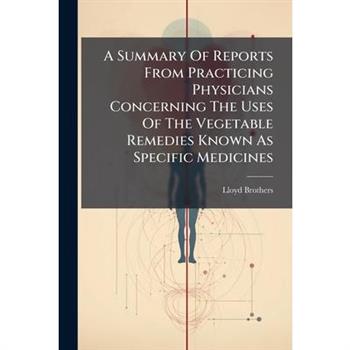

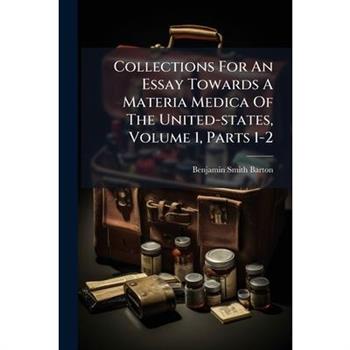
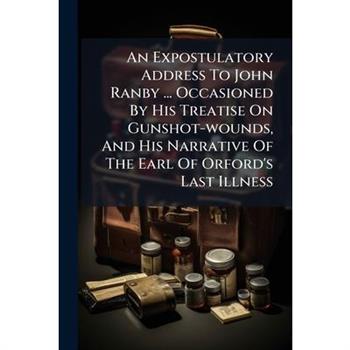



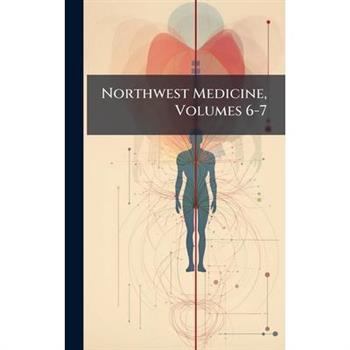
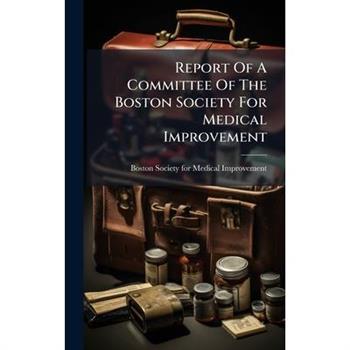

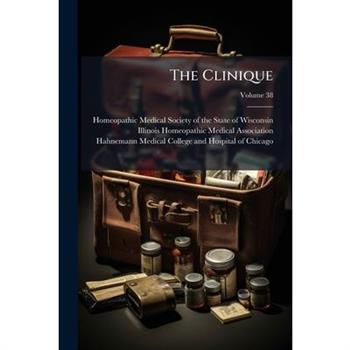
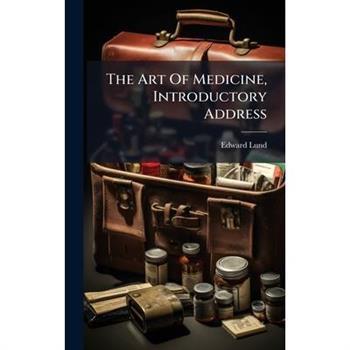
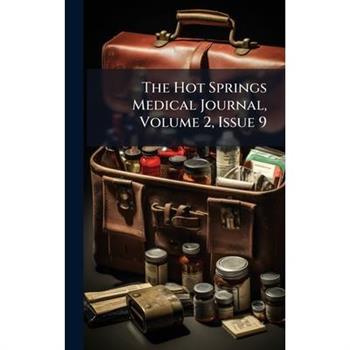
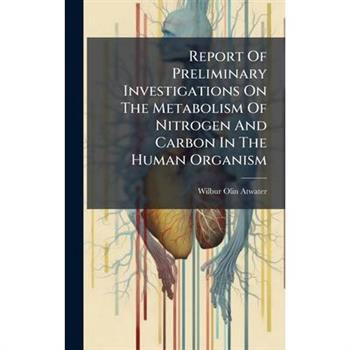

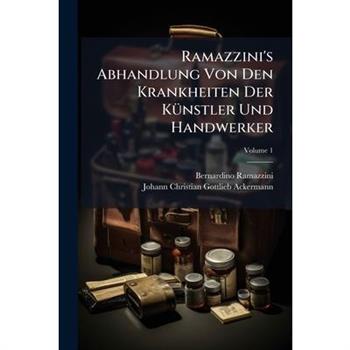




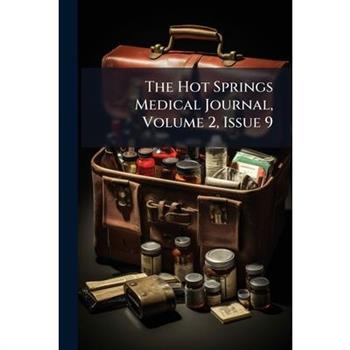
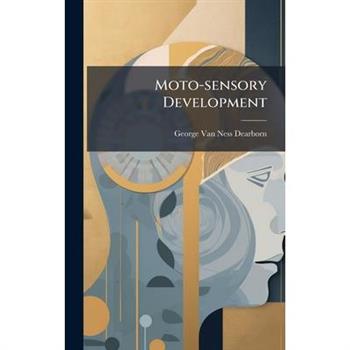


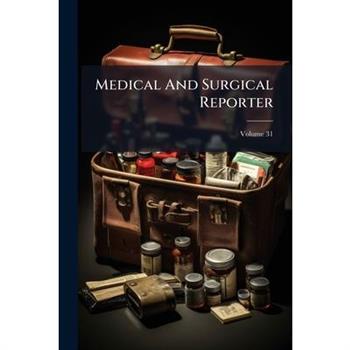
![Cyclop?]dia Of The Practice Of Medicine Cyclop?]dia Of The Practice Of Medicine](https://cdn.kingstone.com.tw/english/images/product/6893/9781024656893m.jpg?Q=a5a9a)
